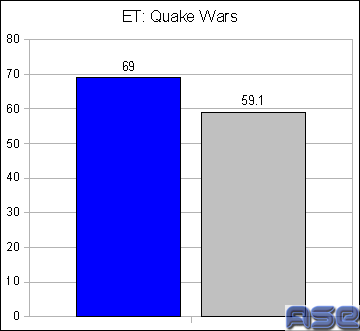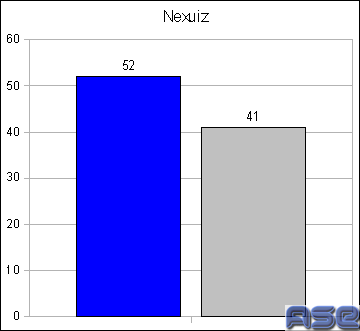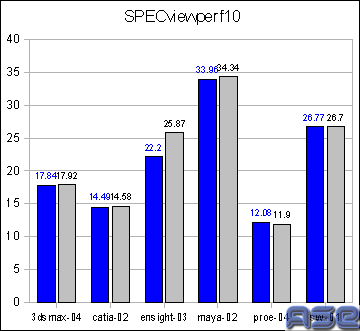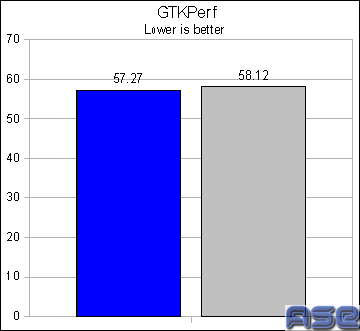Page All: Viewing All Pages
Page 1
Intro:
Graphics card just keep getting faster and faster and there seems to be no end in sight on how much features and power we can cram into a GPU. The playing field has just turned with the release of the RV770, the Radeon HD 4850. Sapphire steps up to provide a card for this review. It is very fast.
About Sapphire:
RV770:
Since this is a brand new graphics card chipset, I will go into the technology behind it. Unlike the RV670 that this replaces, the RV770 Pro (4850) uses GDDR3 instead of the GDDR4 that the 3800 series used. The RV770 XT (4870) will move up to GDDR5 and should provide much more memory bandwidth for stream processing. Interestingly enough, both AMD and Nvidia are saying the benefits of using GPUs for generic stream calculations. AMD's GPGPU project aims at supporting this.
AMD has partnered with Intel (amazingly) to provide HAVOK physics for its own GPUs. The 4800 series will support HAVOK in the future. GPU physics has finally arrived and thankfully we don't need another expansion card. Nvidia is doing the same with PhysX.
The 4850 supports 800 stream processors (meaning stream calculations will be a breeze for this card), a 965 million transistor count build on a 55 nm process, 40 texture units, and clock speeds of 625MHz for the core and 1986MHz for the GDDR3 512MB RAM. The card has a maximum power consumption of 110 watts.
The latest graphics chips from AMD support the lot of standard and de facto standards including OpenGL 2.0 and DirectX 10.1. In terms of codec support, the UVD 2 (Unified Video Decoder 2) supports a range of formats. Sadly, open source support for UVD is still lacking but that should change soon. AMD is working on bringing the open source side of their graphics on par with the Windows side.
Box:
The Sapphire Radeon HD 4850 retail box is black with red accents. This is the case it should be since ATI graphics are known to be red. Also, red and black are my favorite colors. While the box says it supports some stuff, there is no mention of Linux support even though AMD has said it wants its partners to include a penguin or other open sourcey stuff on the box. The Catalyst 8.6 drivers for Linux support this GPU and were released last month.
100242L Specs:
The 4850 GPU should be faster than the 3870 and the testing will show this in games. It is amazing that mid range graphics products are coming out before the high end products. This is really how the cycle should be. The money makers are the mid range products, after all. The 4850 is the GPU for everyone.
Intro:
Graphics card just keep getting faster and faster and there seems to be no end in sight on how much features and power we can cram into a GPU. The playing field has just turned with the release of the RV770, the Radeon HD 4850. Sapphire steps up to provide a card for this review. It is very fast.
About Sapphire:
Quote
Pioneers in a new era of how data is displayed and games are played, Sapphire shepherds the performance oriented with ground-breaking solutions to an environment that remains in a constant state of flux and ultimate evolution. For over ten years Sapphire has held true to its unwavering commitment, the commitment to deliver the most feature rich and soundly engineered products. Because of Sapphire's firm position on achieving excellence with each product that leaves our ISO9001 and ISO14001 certified factories, you can rest assured that your customers will recognize YOUR commitment to selling only the highest of quality components.
"Sapphire is ATI's largest and best performing partner World Wide" Dave Orton, CEO ATI
Since ATI announced its manufacturing & distribution relationships with ODMs and AiBs in June of 2001, SAPPHIRE has been THE key ATI Graphics Boards Supplier worldwide and now stands poised and ready to capture the mainboard audience of those who seek a stable platform for their mission critical operations.
Captured within the circuitry of each of SAPPHIRE's graphic cards and mainboards can be found the collective feedback from generations of enthusiasts in every market niche. Brought to life through performance oriented innovation and an emphasis on quality control, SAPPHIRE designs, manufactures and distributes the most complete range of ATI video boards and mainboards--from the mainstream products that afford the casual user the opportunity to enjoy enriched graphics and affordable platform solutions to the state-of-the-art technological marvels that drive fantasies to before unattainable thresholds of realism, and offer the pinnacle of stability and performance! SAPPHIRE refuses to compromise quality by cutting corners at the expense of its customers experience with their products. All ATI board designs undergo a stringent layout inspection by our staff of engineers to guarantee that they represent the usual high-quality image of ATI original boards. We also enjoy the resources of a highly innovative technical department that layout complex designs to accommodate different market niches as they arise. SAPPHIRE ATI video boards have long been the reliable choice for a great number of OEMs and large System Integrators in Europe, North America, Asia and Latin America based largely on our ability to meet a fast paced technical markets advancements as well as our means to produce large quantities of product.
All SAPPHIRE ATI video boards are manufactured under 100% ATI production criteria including QC and outgoing system. Our monthly video board production capacity can reach a lofty 1.8 million and often topples this landmark figure. Our factory has always been the major manufacturer on ATI boards for most of the top ten tier 1 OEMs worldwide. With this background, you should undoubtedly be guaranteed of the impeccable quality, production capacity and product reliability of all ATI video boards and mainboards from SAPPHIRE. Be they business oriented or something just off center of the crosshairs, Sapphire has a solution for you and we look forward to an exciting and prosperous relationship with you!
RV770:
Since this is a brand new graphics card chipset, I will go into the technology behind it. Unlike the RV670 that this replaces, the RV770 Pro (4850) uses GDDR3 instead of the GDDR4 that the 3800 series used. The RV770 XT (4870) will move up to GDDR5 and should provide much more memory bandwidth for stream processing. Interestingly enough, both AMD and Nvidia are saying the benefits of using GPUs for generic stream calculations. AMD's GPGPU project aims at supporting this.
AMD has partnered with Intel (amazingly) to provide HAVOK physics for its own GPUs. The 4800 series will support HAVOK in the future. GPU physics has finally arrived and thankfully we don't need another expansion card. Nvidia is doing the same with PhysX.
The 4850 supports 800 stream processors (meaning stream calculations will be a breeze for this card), a 965 million transistor count build on a 55 nm process, 40 texture units, and clock speeds of 625MHz for the core and 1986MHz for the GDDR3 512MB RAM. The card has a maximum power consumption of 110 watts.
The latest graphics chips from AMD support the lot of standard and de facto standards including OpenGL 2.0 and DirectX 10.1. In terms of codec support, the UVD 2 (Unified Video Decoder 2) supports a range of formats. Sadly, open source support for UVD is still lacking but that should change soon. AMD is working on bringing the open source side of their graphics on par with the Windows side.
Box:
The Sapphire Radeon HD 4850 retail box is black with red accents. This is the case it should be since ATI graphics are known to be red. Also, red and black are my favorite colors. While the box says it supports some stuff, there is no mention of Linux support even though AMD has said it wants its partners to include a penguin or other open sourcey stuff on the box. The Catalyst 8.6 drivers for Linux support this GPU and were released last month.
100242L Specs:
- Core frequency 625MHz
- Memory frequency 993MHz (1986MHz DDR)
- Unified shader pipelines 800
- Memory Bus (bit) 256
- memory type GDDR3
- data bus PCI Express x16
- RAMDAC 2x400MHz
- Peak memory bandwidth (GB/sec) 63.55
- Pixel Shader version 4.1
- DirectX DX10.1 SM4.1
- OpenGL 2.0
- HDTV compatibility (YPbPr) yes
- HDMI compliance / HDCP ready HDMI 1.3 / yes
- HDMI modes (over DVI) 480p, 720p, 1080i, 1080p
- Native display support 10-bit
- 3D Graphics Resolution 2560x1600
- TV Out resolution 1024x768 1080i
- Physics support
The 4850 GPU should be faster than the 3870 and the testing will show this in games. It is amazing that mid range graphics products are coming out before the high end products. This is really how the cycle should be. The money makers are the mid range products, after all. The 4850 is the GPU for everyone.
Page 2
Parts:
No! STOP! A much needed warning is now included on all cards that require a power connection. I say just leave it be and let people fend for themselves. Hey, if they don't read the manual... well, I don't read the manual either.
Sapphire's bundle is very good and has been. The hardware parts include a DVI to VGA connection, a DVI to HDMI connection (with 7.1 audio support), a Crossfire cable, a USB sampler drive, a power connector, and some TV out cables. The USB sampler is 2GB and includes some nice pictures and demos of how the graphics card works. Pretty interesting.
You also get a manual and a good load of software for Windows. The bundle now includes 3DMark Vantage for your benchmarking goodness, but that's a synthetic benchmarks. Sapphire should bundle a game instead since that would be fun. There is a Ruby Rom CD that includes stuff about Ruby, the ATI mascot. FYI: The driver disk does not have any open source drivers even though they were ready for release.
This 2GB USB flash drive is a nice bonus since you can use it for anything. I'm sure that this won't be included in the box for much longer.
The Sapphire Radeon HD 4850 is a single slot card which I always like over the dual slot cooler combination. The problem with the single slot solution is that cooling is usually worse due to the cramped space. This card gets extremely hot to the touch. I checked with an IR thermometer and it was hovering at 180 degrees F. The card was stable throughout the testing and normal use, though. If your case has proper ventilation, the card will stay cooler.
The unit features two DVI ports and the standard TV out port. The DVI ports can be changed to HDMI which also pumps out 7.1 audio. That is pretty impressive for a graphics card. It also supports HDCP for those that like to degrade their rights.
The Sapphire Radeon HD 4850 is bathed in red with black accents. Red and black are a great combination and it is ATI's default color. You can see the Crossfire connection on this side of the card and also notice how the heatsink attempts to direct air away from the card.
The unit is PCI Express 2.0 and fits in all 16x slots. The extra copper heatsink is probably for the surface memory. It doesn't get nearly as hot as the core.
The bottom is pretty packed full of components. Notice no memory on the bottom of the unit. As always, the card is made in China and it green with RoHS compliance. It even has green labeling for the extra effort.
Here is a comparison shot between the 4850 and a »3870 Toxic from the same company. Notice that the cards are nearly the same, but the 4850 is just slightly longer. It should have no trouble fitting in almost all cases.
Parts:
No! STOP! A much needed warning is now included on all cards that require a power connection. I say just leave it be and let people fend for themselves. Hey, if they don't read the manual... well, I don't read the manual either.
Sapphire's bundle is very good and has been. The hardware parts include a DVI to VGA connection, a DVI to HDMI connection (with 7.1 audio support), a Crossfire cable, a USB sampler drive, a power connector, and some TV out cables. The USB sampler is 2GB and includes some nice pictures and demos of how the graphics card works. Pretty interesting.
You also get a manual and a good load of software for Windows. The bundle now includes 3DMark Vantage for your benchmarking goodness, but that's a synthetic benchmarks. Sapphire should bundle a game instead since that would be fun. There is a Ruby Rom CD that includes stuff about Ruby, the ATI mascot. FYI: The driver disk does not have any open source drivers even though they were ready for release.
This 2GB USB flash drive is a nice bonus since you can use it for anything. I'm sure that this won't be included in the box for much longer.
The Sapphire Radeon HD 4850 is a single slot card which I always like over the dual slot cooler combination. The problem with the single slot solution is that cooling is usually worse due to the cramped space. This card gets extremely hot to the touch. I checked with an IR thermometer and it was hovering at 180 degrees F. The card was stable throughout the testing and normal use, though. If your case has proper ventilation, the card will stay cooler.
The unit features two DVI ports and the standard TV out port. The DVI ports can be changed to HDMI which also pumps out 7.1 audio. That is pretty impressive for a graphics card. It also supports HDCP for those that like to degrade their rights.
The Sapphire Radeon HD 4850 is bathed in red with black accents. Red and black are a great combination and it is ATI's default color. You can see the Crossfire connection on this side of the card and also notice how the heatsink attempts to direct air away from the card.
The unit is PCI Express 2.0 and fits in all 16x slots. The extra copper heatsink is probably for the surface memory. It doesn't get nearly as hot as the core.
The bottom is pretty packed full of components. Notice no memory on the bottom of the unit. As always, the card is made in China and it green with RoHS compliance. It even has green labeling for the extra effort.
Here is a comparison shot between the 4850 and a »3870 Toxic from the same company. Notice that the cards are nearly the same, but the 4850 is just slightly longer. It should have no trouble fitting in almost all cases.
Page 3
Installation:
The card was installed in my standard test system for graphics. The Asus P5E3 Deluxe had no problems accommodating this graphics card and an Antec NeoHE 550 Watt PSU was more than adequate to give enough power. I suggest that your case has proper ventilation since this card throws off a load of heat.
Apart from the hardware installation, the software installation was a bit shaky. The Sapphire driver CD contained no Linux drivers even though AMD has provided support for Linux in their fglrx since the release of this card. A quick trip to ATI's site fixed the issue, a part of it anyway. After the driver installation was complete, there was a black border surrounding the picture even though the resolution was set correctly. The fglrx or the card is not reporting (or using) the monitor's EDID data correct and it applying too much underscan. The fix is an aticonfig command. Type "aticonfig --set-pcs-val=MCIL,DigitalHDTVDefaultUnderscan,0" without quotes at a terminal line to fix this border. Restart X and you should be good to go. The fglrx driver still needs work and the radeonhd (free and open source) driver needs a ton of work. Even so, Linux support is getting there. It wasn't long ago that support for latest cards were lagged by months. Now the Catalyst 8.6 drivers work fine after the initial hiccup.
Catalyst Control Center:
I have never really shown the Catalyst Control Center before so I'll go into the 3D parts of it. As you can see, the card is a 4800 series using OpenGL 2.1. The card has a memory clock of 993MHz and a core clock of 625MHz and is using PCI Express 2.0.
Anisotropic filtering, anti-aliasing, and mipmap detailing can all be adjusted and override the application settings. I normally let my apps decide what they want to do. Sometimes I like aliasing for certain things (like font rendering) just as an example. Note that font rendering and 3D are different, so don't think I'm comparing the two.
The Catalyst AI is included in the Linux and is set for default of standard. It basically enhances some programs that the driver detects. Some games work better when this option is enabled. If you experience tearing, you can set the wait for vertical refresh to on.
Testing:
All testing on ASE Labs is done with the current version of Ubuntu (8.04 at the time of this writing). The 4850 was tested with the newest Catalyst 8.6 drivers that were just released from ATI's site. The Catalyst Control Center was also installed along side. An Asus P5E3 Deluxe with 2GB of »Crucial PC3-16000 RAM and a Core 2 Quad Q6600 running at 2.7GHz (1800MHz FSB) was used for testing. A »Sapphire 3870 Toxic was used as a comparison for this card. The blue bar indicates the 4850 while the gray denotes the 3870 Toxic. All games were run at 1920x1200. These are powerful graphics cards and the higher resolution, the better.
Two games and two synthetic benchmarks were used to test out the unit. Nexuiz and Enemy Territory: Quake Wars rounded the games testing while SPECviewperf10 and GTKperf handled the synthetic.
In ET: Quake Wars, the highest possible details settings were used. The application didn't allow me to enable anti-aliasing, and while I could have forced it, I didn't need to to make the comparison.
The testing shows that the 4850 holds a very healthy lead over the Toxic which is an overclocked 3870. I wonder how the 4870 will perform when it gets released in a couple of days...
The settings for Nexuiz were set to full tilt and 4x MSAA.
Nexuiz shows more of the same, the 4850 is smoking the older generation card. That's about a 27% improvement in FPS for the graphics card alone. Truly impressive.
Installation:
The card was installed in my standard test system for graphics. The Asus P5E3 Deluxe had no problems accommodating this graphics card and an Antec NeoHE 550 Watt PSU was more than adequate to give enough power. I suggest that your case has proper ventilation since this card throws off a load of heat.
Apart from the hardware installation, the software installation was a bit shaky. The Sapphire driver CD contained no Linux drivers even though AMD has provided support for Linux in their fglrx since the release of this card. A quick trip to ATI's site fixed the issue, a part of it anyway. After the driver installation was complete, there was a black border surrounding the picture even though the resolution was set correctly. The fglrx or the card is not reporting (or using) the monitor's EDID data correct and it applying too much underscan. The fix is an aticonfig command. Type "aticonfig --set-pcs-val=MCIL,DigitalHDTVDefaultUnderscan,0" without quotes at a terminal line to fix this border. Restart X and you should be good to go. The fglrx driver still needs work and the radeonhd (free and open source) driver needs a ton of work. Even so, Linux support is getting there. It wasn't long ago that support for latest cards were lagged by months. Now the Catalyst 8.6 drivers work fine after the initial hiccup.
Catalyst Control Center:
I have never really shown the Catalyst Control Center before so I'll go into the 3D parts of it. As you can see, the card is a 4800 series using OpenGL 2.1. The card has a memory clock of 993MHz and a core clock of 625MHz and is using PCI Express 2.0.
Anisotropic filtering, anti-aliasing, and mipmap detailing can all be adjusted and override the application settings. I normally let my apps decide what they want to do. Sometimes I like aliasing for certain things (like font rendering) just as an example. Note that font rendering and 3D are different, so don't think I'm comparing the two.
The Catalyst AI is included in the Linux and is set for default of standard. It basically enhances some programs that the driver detects. Some games work better when this option is enabled. If you experience tearing, you can set the wait for vertical refresh to on.
Testing:
All testing on ASE Labs is done with the current version of Ubuntu (8.04 at the time of this writing). The 4850 was tested with the newest Catalyst 8.6 drivers that were just released from ATI's site. The Catalyst Control Center was also installed along side. An Asus P5E3 Deluxe with 2GB of »Crucial PC3-16000 RAM and a Core 2 Quad Q6600 running at 2.7GHz (1800MHz FSB) was used for testing. A »Sapphire 3870 Toxic was used as a comparison for this card. The blue bar indicates the 4850 while the gray denotes the 3870 Toxic. All games were run at 1920x1200. These are powerful graphics cards and the higher resolution, the better.
Two games and two synthetic benchmarks were used to test out the unit. Nexuiz and Enemy Territory: Quake Wars rounded the games testing while SPECviewperf10 and GTKperf handled the synthetic.
In ET: Quake Wars, the highest possible details settings were used. The application didn't allow me to enable anti-aliasing, and while I could have forced it, I didn't need to to make the comparison.
The testing shows that the 4850 holds a very healthy lead over the Toxic which is an overclocked 3870. I wonder how the 4870 will perform when it gets released in a couple of days...
The settings for Nexuiz were set to full tilt and 4x MSAA.
Nexuiz shows more of the same, the 4850 is smoking the older generation card. That's about a 27% improvement in FPS for the graphics card alone. Truly impressive.
Page 4
Testing cont'd:
SPECviewperf10 shows a different side. The 3870 seems to edge out in this synthetic benchmark. This proves that you can't relying on synthetics alone to see the speed of cards (3DMark, I'm looking at you).
Rounding out the testing is GTKperf which is 2D rendering. Lower is better in this benchmark and the 4870 comes in the lead at 2D rendering.
Quality:
ATI has consistently had excellent quality 2D graphics and the trend continues. You will have no trouble even at high resolutions with this card. 3D quality is equally good. Throw on anti-aliasing and you're all set for gaming goodness.
Conclusion:
The Sapphire Radeon HD 4850 costs around $200 which is a great price for a mid range product such as this. Think about this, the card should be able to stand near the Radeon HD 3870 X2 and that was a pretty expensive card. If you already own a 3800 series card, you're best bet it to wait till the 4870s are out in force before jumping on the 4800 series. Even so, the 4850 has amazing performance with a good price point. The bundle that Sapphire provides is icing on the cake.
I'd like to thank Don from Sapphire for making this review possible.
Testing cont'd:
SPECviewperf10 shows a different side. The 3870 seems to edge out in this synthetic benchmark. This proves that you can't relying on synthetics alone to see the speed of cards (3DMark, I'm looking at you).
Rounding out the testing is GTKperf which is 2D rendering. Lower is better in this benchmark and the 4870 comes in the lead at 2D rendering.
Quality:
ATI has consistently had excellent quality 2D graphics and the trend continues. You will have no trouble even at high resolutions with this card. 3D quality is equally good. Throw on anti-aliasing and you're all set for gaming goodness.
Conclusion:
The Sapphire Radeon HD 4850 costs around $200 which is a great price for a mid range product such as this. Think about this, the card should be able to stand near the Radeon HD 3870 X2 and that was a pretty expensive card. If you already own a 3800 series card, you're best bet it to wait till the 4870s are out in force before jumping on the 4800 series. Even so, the 4850 has amazing performance with a good price point. The bundle that Sapphire provides is icing on the cake.
I'd like to thank Don from Sapphire for making this review possible.























